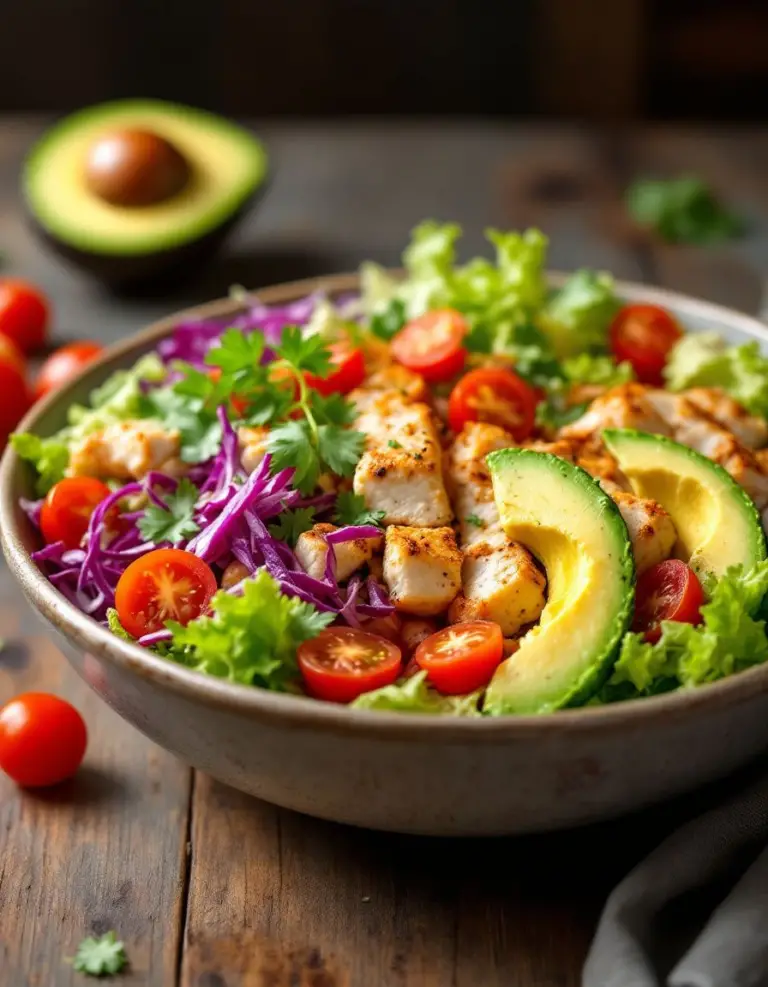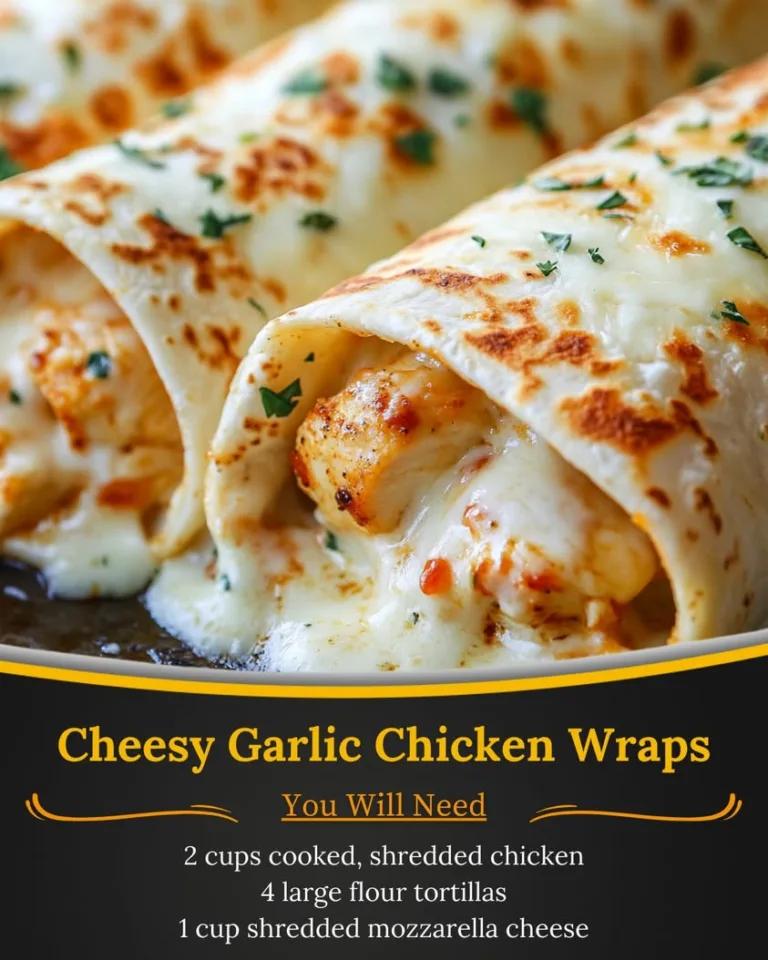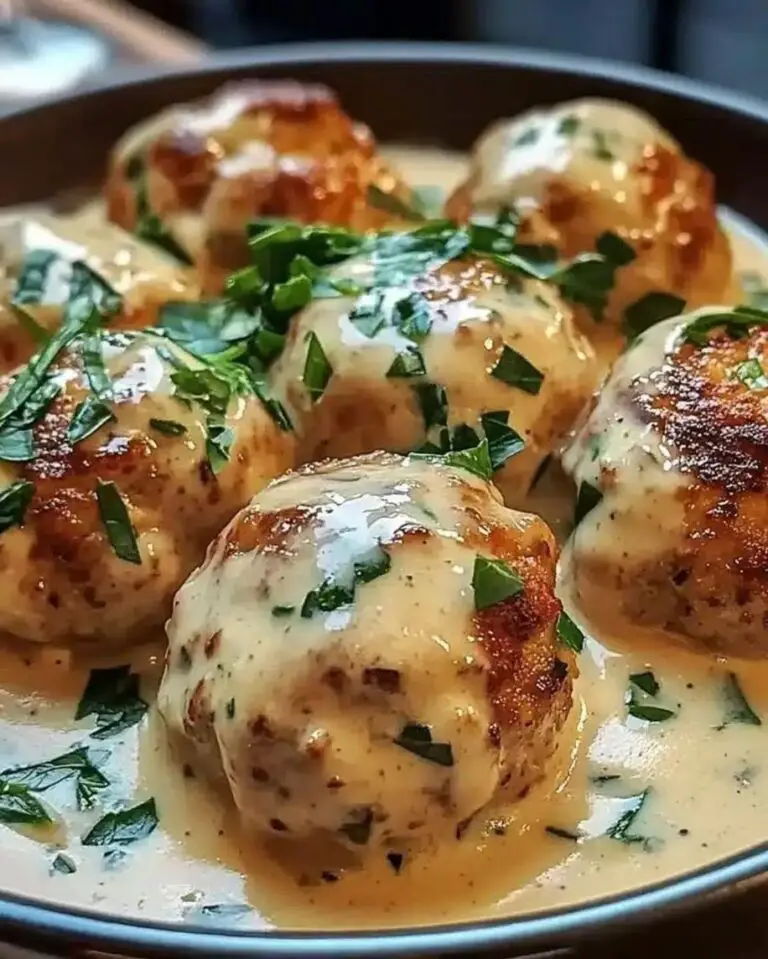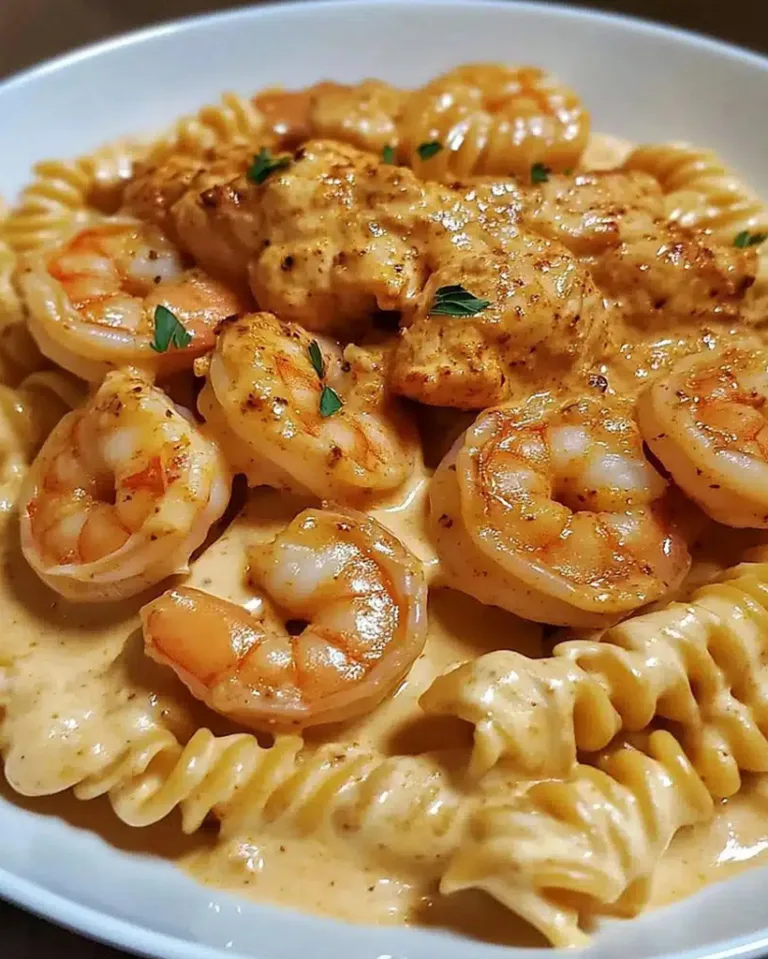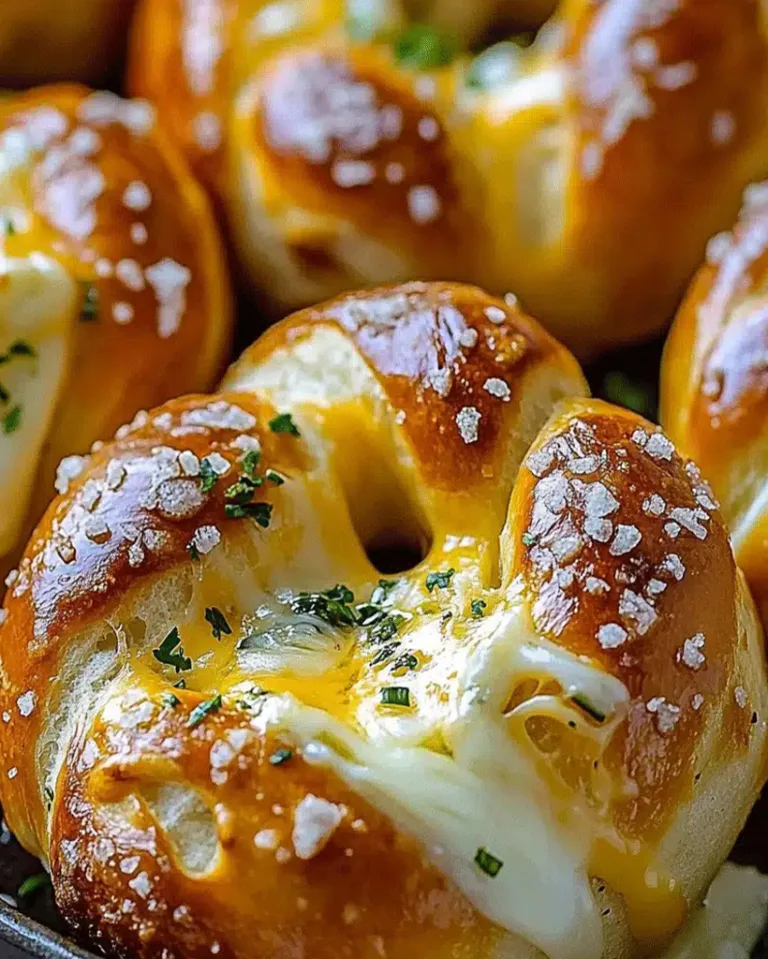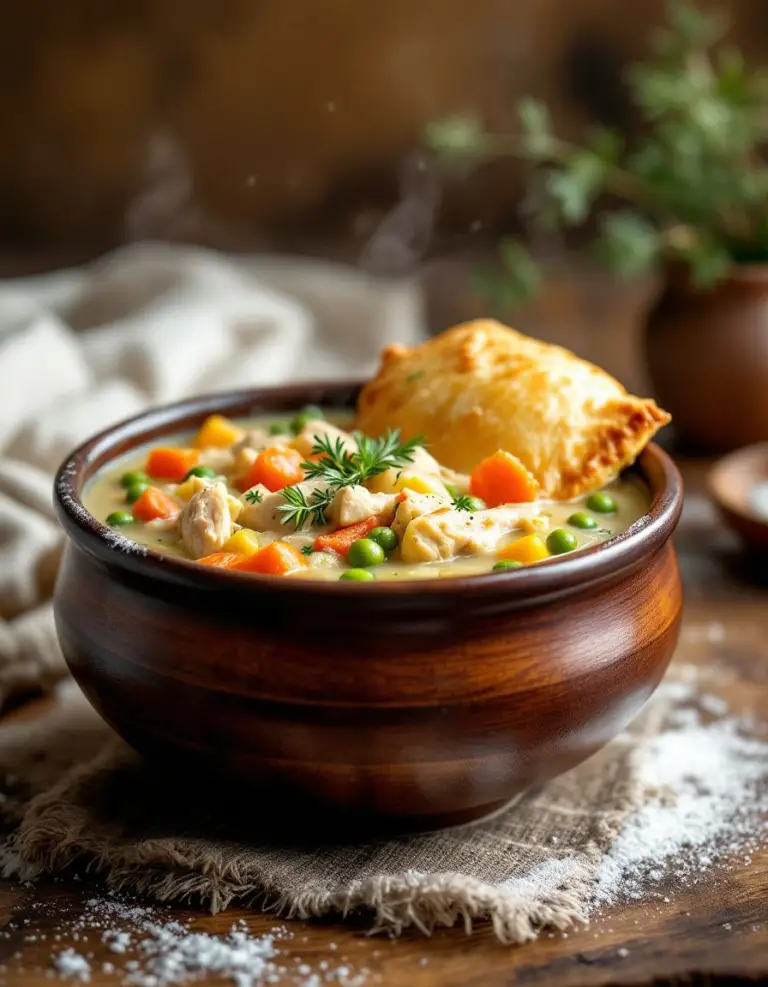Easy Pineapple Chicken and Rice – Ready in 30 Minutes
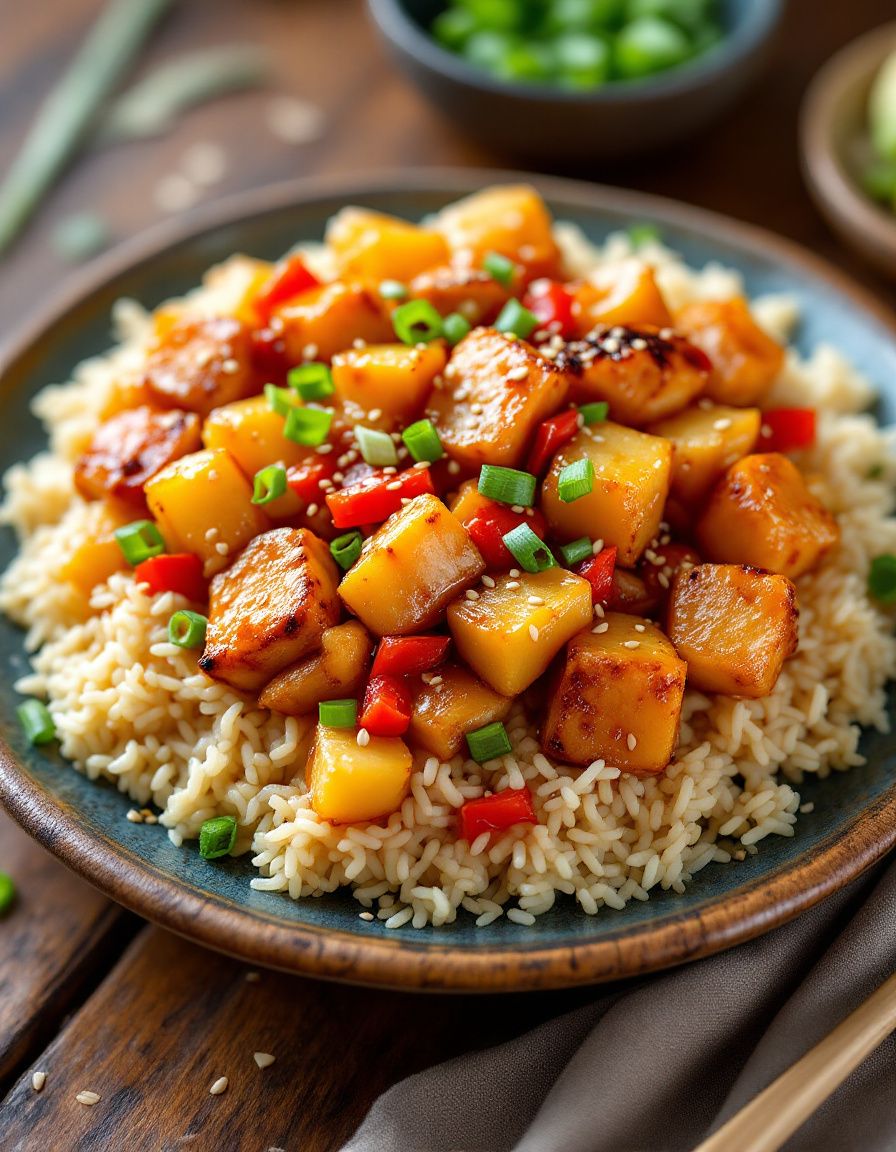
Pineapple Chicken and Rice – Sweet, Savory & So Easy!
Looking for a dish that balances sweet and savory flavors while being incredibly easy to make? Look no further than this delectable Pineapple Chicken and Rice! This dish brings together tender chicken pieces, perfectly cooked rice, and juicy pineapple chunks, creating an explosion of taste that delights the palate. You’ll love how each forkful bursts with flavor, whisking you away to tropical paradise in just a few bites. It’s an ideal weeknight meal that doesn’t skimp on flavor or satisfaction.
This Pineapple Chicken and Rice recipe is designed for those who crave simplicity without sacrificing quality. With its tantalizing aroma of sautéed chicken mingling with fresh pineapple, the dish instantly lifts your spirits. The rice soaks up the delightful juices, making every grain flavorful and perfectly fluffy. Plus, it’s a one-pan wonder, which means less cleanup and more time to enjoy your culinary creation. Whether you’re serving it for a family dinner or impressing guests at a gathering, this dish is guaranteed to be a hit!
Quick Recipe Highlights
- Flavor Profile: This dish combines sweetness from pineapple with savory notes from soy sauce and chicken.
- Texture: Enjoy a wonderful combination of tender chicken, fluffy rice, and juicy pineapple pieces.
- Aroma: A delightful blend of sautéed chicken, aromatic spices, and sweet pineapple fills your kitchen.
- Visual Appeal: The vibrant yellow from the pineapple contrasts beautifully with the golden-brown chicken and white rice.
- Skill Level Needed: Perfect for beginners, this recipe requires minimal cooking skills.
- Special Equipment: All you need is a large skillet or pot to bring it all together.
Recipe Overview
- Difficulty Level: This recipe is easy enough for beginner cooks, with straightforward steps and minimal ingredients.
- Category: A fantastic choice for a quick weeknight dinner or a casual family meal.
- Cuisine: This dish reflects a blend of Asian-influenced flavors, particularly inspired by Hawaiian cuisine.
- Cost: Economical, as most ingredients are affordable and often found in your pantry.
- Season: Great for any season, especially during summer when pineapples are in peak ripeness.
- Occasion: Perfect for busy weekday dinners or as a potluck dish to share with friends.
Why You’ll Love This Recipe
Pineapple Chicken and Rice provides an unmatched taste experience with its sweet pineapple and savory chicken. The combination creates a mouthwatering dish that pleases a variety of palates, whether you’re a fan of sweet or savory flavors.
Convenience is another key advantage of this recipe. With everything cooked in one pot, meal prep becomes a breeze. You can have dinner on the table in less than an hour, and the flavors only get better as they meld together.
Nutritionally, this dish offers lean protein from the chicken, hydration from the pineapple, and fiber from the rice, making it a well-rounded meal that supports a healthy diet.
Socially, it’s a great dish for gatherings. Its tropical flair invites comments from your friends and family, and it’s easy to prepare in large batches, so no one leaves the table hungry.
Cost-effectiveness is a huge plus, making it accessible for most home cooks. It’s made with widely available ingredients, keeping your grocery bill in check while still delivering an impressive meal.
Historical Background and Cultural Significance
The origins of Pineapple Chicken can be traced back to Hawaiian cuisine, where fresh, tropical ingredients often take center stage. Pineapples, of course, are a staple fruit in Hawaii, and their sweet juiciness complements savory dishes beautifully. The combination of chicken and pineapple serves not only as a meal but also as a representation of culinary traditions that value using fresh, local produce.
In addition to its delectable flavor, the dish holds cultural importance as it promotes the amalgamation of cultures through the integration of Asian and Hawaiian influences. Such fusion meals have become staples in many households, revealing how ingredient swapping can create beloved family dinners.
Over the years, Pineapple Chicken has evolved from traditional dishes to modern-day adaptations, adapting culinary techniques and flavor profiles to meet contemporary tastes. This evolution reflects the changing landscapes of cooking and dining, making it a dish that resonates with both nostalgia and modernity.
Regional variations abound, making Pineapple Chicken a global dish. Each region may put its unique spin on it, whether through ingredient swaps, using different spices, or adjusting cooking techniques, reflecting local culinary practices and tastes.
Ingredient Deep Dive
Chicken is a mainstay in many cuisines around the world. It carries significant cultural importance, being a source of sustenance for various cultures. From an economic perspective, chicken is often more affordable than other meats. Nutritionally, it provides a high amount of protein and essential nutrients. When selecting chicken, look for fresh, organic options when possible. Store it in the refrigerator and use it within two days or freeze for longer preservation. Alternatives like tofu or tempeh can serve as protein substitutes in this dish.
Pineapple is synonymous with tropical climates, representing refreshment and sweetness. It packs a load of vitamins, particularly vitamin C, making it an excellent addition to your diet. For selection, opt for ripe pineapples with a sweet smell and slight give when pressed. Store whole fruit at room temperature for a couple of days, or refrigerate cut pineapple. Canned pineapple can be a quick substitute, but always opt for varieties packed in juice rather than syrup for less added sugar.
Common Mistakes to Avoid
- Using unmixed ingredients at the start can lead to uneven cooking; ensure everything is well-combined.
- Not properly marinating the chicken can prevent full flavor absorption; give it enough time to soak in flavors.
- Overcooking rice can make it mushy; keep an eye on cooking time and follow package instructions.
- Not adjusting seasoning after cooking can result in a bland dish; always taste before serving.
- Using undercooked chicken can lead to foodborne illnesses; always ensure it reaches a safe internal temperature.
- Skipping the resting time post-cooking can affect texture; let it sit for a few minutes for optimal serving.
- Cooking at too high a temperature may burn the dish; use medium heat to achieve a balanced cook.
- Ignoring the color and texture of the pineapple can lead to a less appealing dish; always choose fresh, bright fruit.
Essential Techniques
Sautéing is a core technique for this dish. It’s important because it caramelizes the chicken and enhances its natural flavors. To master sautéing, ensure your pan is hot and don’t overcrowd it; this allows for a proper sear. Watch for golden-brown color as a cue for success.
Adding ingredients in stages is another essential technique. This ensures that each element—chicken, vegetables, and rice—cooks perfectly without overcooking or undercooking. Timing is critical, so prepare ingredients ahead of time for a smooth cooking process.
Pro Tips for Perfect Pineapple Chicken and Rice
1. Marinate the chicken for at least 30 minutes to enhance flavor infusion.
2. Choose fresh, ripe pineapple for the best sweetness and texture.
3. For added depth, include bell peppers or carrots for extra veggies.
4. Use low-sodium soy sauce to control salt levels while maintaining flavor.
5. Keep rice slightly undercooked since it will absorb the juices during resting.
6. Experiment with different spices like ginger or sesame oil for a unique twist.
7. Don’t hesitate to add chili flakes if you prefer a spicy kick.
8. For an elegant touch, garnish with fresh cilantro or green onions before serving.
Variations and Adaptations
Regional variations can highlight different flavors; for instance, you can add jerk spices for a Caribbean twist or go for teriyaki for an Asian-inspired flair. Seasonal adaptations allow you to replace pineapple with mango in the summer for a refreshing change.
Dietary modifications can include swapping chicken for shrimp or tofu, accommodating pescatarian or vegan diets. For those on a low-carb regimen, using cauliflower rice instead of regular rice makes the dish keto-friendly.
Flavor variations are limitless with the addition of barbecue sauce or teriyaki glaze to bring a different profile. To switch up the texture, consider adding crunchy veggies like water chestnuts or chopped nuts for an added crunch. You can also serve it in lettuce wraps for a fun presentation.
Serving and Presentation Guide
Plating techniques can elevate the dish; serve the chicken and rice in a large, shallow bowl, and top with fresh pineapple slices and green onions for a bright presentation. Garnish with cilantro or sesame seeds for added visual appeal.
Traditional accompaniments like Asian-style pickles or a simple salad can complement the meal well. For a modern twist, consider serving it in an individual-sized cast iron skillet for a rustic look.
Temperature considerations are also vital; serve the dish warm and straight from the stove, and momentarily letting it rest will help flavors meld. Portion control is easily managed by using a cup measure to distribute servings evenly.
Wine and Beverage Pairing
Wine pairings can enhance the dish’s tropical flavor; a crisp white like Sauvignon Blanc or a fruity Riesling complements sweet and savory notes beautifully.
For non-alcoholic choices, consider sparkling water with a slice of lime or a tropical iced tea for a refreshing contrast.
If you want to enjoy coffee or tea after the meal, opt for a mild green tea that won’t overwhelm the palate.
Storage and Shelf Life
Proper storage methods will ensure freshness; refrigerate leftovers in an airtight container for up to three days. For longer preservation, the dish freezes well for up to three months.
Temperature requirements dictate that the dish should cool down before refrigeration; this helps prevent moisture buildup in the container. Use glass containers for safe reheating and to monitor portion sizes with ease.
Signs of spoilage include unpleasant odors or discoloration; discard immediately if either occurs. Reheating instructions involve using the microwave or stovetop, ensuring it’s heated thoroughly before consumption.
Make Ahead Strategies
Prep timeline is crucial; marinate the chicken the night before for optimal flavor impact.
Storing between steps is beneficial for busy weekdays; cook the rice ahead and keep it refrigerated. During busy times, assembling the cooked ingredients in the evening allows for quick reheating and serving.
Quality can be impacted if ingredients sit too long; strive to use marinated chicken within 24 hours for peak flavor. For fresh element additions, consider slicing herb garnishes just prior to serving for maximum freshness.
Scaling Instructions
To halve the recipe, use a smaller pan and adjust cooking times slightly to avoid overcooking.
Doubling or tripling the recipe requires larger cookware; make sure to cook in batches to prevent steaming.
Equipment adjustments involve utilizing a larger skillet or dutch oven and ensuring that all elements are evenly spaced for proper cooking. Timing modifications may be necessary as larger quantities can take longer to reach temperature.
Storage considerations should account for space; allow the dish to cool completely before placing it in appropriately sized containers for refrigeration.
Nutritional Deep Dive
A macro breakdown reveals that each serving offers a good balance of protein, carbohydrates, and essential fats.
Micronutrient analysis shows abundant vitamins from the pineapple and chicken, contributing to immune support.
The dish’s health benefits extend beyond nutrition; it’s a great way to incorporate more fruits into your meals.
Dietary considerations include its ability to provide instant energy from carbohydrates while still being rich in nutrients.
Portion analysis suggests one serving is sufficient for balanced nutrition, especially when paired with a colorful side salad.
Weight management tips include monitoring portion sizes and incorporating more vegetables into the mix for a hearty meal.
Dietary Adaptations
For gluten-free adjustments, substitute regular soy sauce with tamari.
Dairy-free options are naturally included; simply avoid any cheese toppings.
For vegetarians, tofu or chickpeas can provide a suitable protein alternative while maintaining heartiness.
Low-carb adaptations can be achieved by using cauliflower rice instead of traditional rice.
Keto-friendly options remain accessible with weight management in mind, focusing on lower carbohydrate contents.
Paleo enthusiasts can enjoy this dish without any modifications, keeping all ingredient lists intact.
Low-FODMAP dieters should focus on portion control with pineapple and avoid additional garlic or onion flavorings.
Troubleshooting Guide
Texture issues may arise if chicken is overcooked, yielding dry meat; keep an eye on cooking times and temperatures.
Flavor balance can be adjusted simply by adding a pinch of salt or a splash of vinegar to enhance sweetness when necessary.
Temperature problems can lead to undercooked rices or overcooked chicken; always check internal temperatures of proteins.
Equipment challenges don’t usually happen, but if using an unfamiliar pan, be sure to adjust heat accordingly.
Ingredient substitutions can alter tastes; consider that any swap can slightly change the dish’s character, so choose wisely.
Timing concerns are common; if prepping in advance, ensure all ingredients are prepped to avoid delays during cooking.
Recipe Success Stories
Community feedback often emphasizes the ease of preparation and delightful taste of this Pineapple Chicken and Rice dish.
Adaptation stories reveal that families have personalized the recipe, swapping in their favorite vegetables for a unique twist.
Reader suggestions frequently include adding different fruits to experiment with flavors, showing the dish’s versatility.
Photography tips often underscore the importance of showcasing vibrant colors and textures for a mouthwatering presentation.
Personal anecdotes share frequent requests and memorable moments created around this shared recipe highlight the love found in the kitchen.
Frequently Asked Questions
1. Can I use frozen chicken for this recipe?
Yes, you can use frozen chicken, but make sure it is fully thawed before cooking to ensure even cooking.
2. How do I store leftovers?
Leftovers should be transferred to an airtight container and can be refrigerated for up to three days.
3. Can this recipe be doubled?
Absolutely! You can double the ingredients but cook in batches to get even heat distribution.
4. Is it possible to make this dish vegetarian?
Yes, you can substitute chicken with tofu or tempeh while keeping other ingredients the same.
5. What is the best way to reheat this dish?
Reheat in the microwave or stovetop, ensuring it reaches 165°F (75°C) before consuming.
6. Can I add other vegetables to the dish?
Certainly! Mix in bell peppers, carrots, or snap peas to introduce color and additional nutrition.
7. How spicy is this recipe?
The recipe is not spicy by default, but you can add red pepper flakes for some heat if desired.
8. How can I make this dish more flavorful?
Marinating your chicken and adjusting the seasoning can elevate the overall flavor profile significantly.
9. What type of rice do you recommend?
Long-grain rice like basmati or jasmine works best for a light and fluffy texture.
10. How long does this dish take to make?
The total time is approximately 45 minutes, including prep and cook time.
Additional Resources
For related recipes, try transforming your favorite vegetables into savory stir-fries or explore other chicken variations.
Technique guides on marinating and sautéing can enhance skills and make cooking more enjoyable.
Ingredient information is key; dive deeper into the nutritional benefits of each ingredient for a healthier meal plan.
Equipment recommendations can help improve cooking techniques; consider investing in a good-quality skillet.
Seasonal variations can keep your menu exciting; replace seasonal fruits to add a refreshing change throughout the year.
Join the Conversation
We encourage you to share your take on this Pineapple Chicken and Rice recipe! Follow us on social media to post photos, and connect with fellow food lovers. Your feedback is essential; let us know what variations or twists you’ve made to the recipe. Engaging with our community can lead you to discover new inspirations and ideas, so don’t hesitate to get involved in the conversation surrounding this delightful dish.
The Recipe
Pineapple Chicken and Rice
Serves: 4 servings
Prep Time: 15 mins
Cook Time: 30 mins
Total Time: 45 mins
Kitchen Equipment Needed
- Large skillet or pot
- Cutting board
- Sharp knife
- Measuring cups and spoons
- Wooden spoon or spatula
Ingredients
- 1 lb chicken breast, cubed
- 2 cups uncooked rice
- 1 cup pineapple chunks (fresh or canned)
- 1/4 cup soy sauce
- 1/4 cup chicken broth
- 1 tablespoon olive oil
- 1/2 teaspoon black pepper
- 1 tablespoon sesame seeds (optional)
- Chopped green onions for garnish
Directions
- In a large skillet, heat olive oil over medium heat. Add marinated chicken, seasoning with black pepper, and sauté until golden brown.
- Stir in the rice, followed by the chicken broth and soy sauce. Mix well to combine.
- Gently fold in the pineapple chunks, cover the skillet, and reduce heat. Let it cook for about 20 minutes until the rice is tender.
- Once done, remove from heat and let it rest for 5 minutes. Fluff with a fork and garnish with green onions and sesame seeds, if using.
- Serve warm and enjoy your delicious Pineapple Chicken and Rice!
Recipe Notes
- Feel free to substitute the chicken with tofu or shrimp for different protein options.
- Adjust sweetness by using more or less pineapple according to your taste preference.
- For added crunch, consider serving it with toasted cashews on top.

